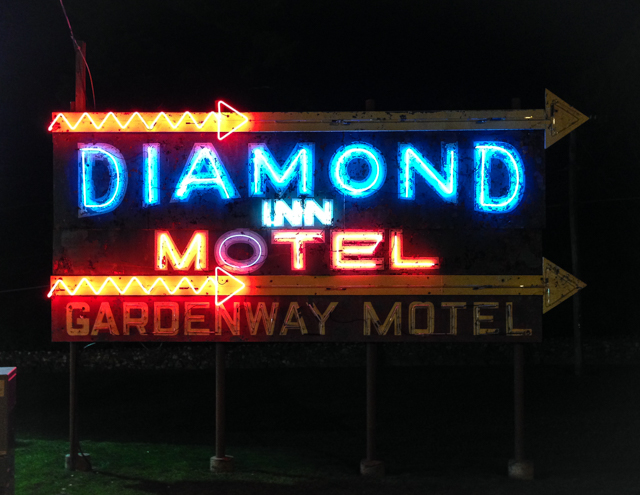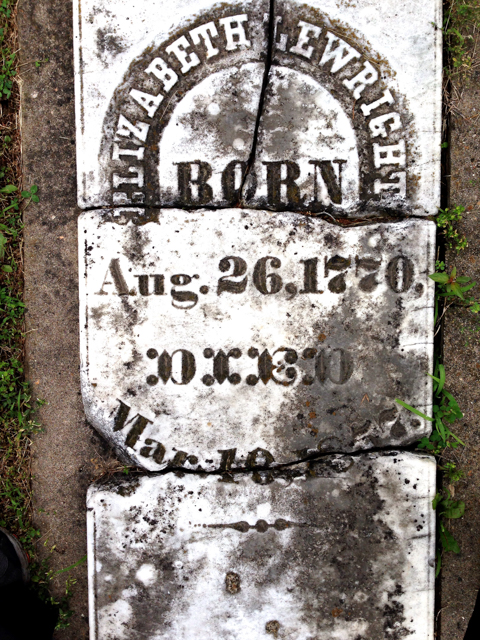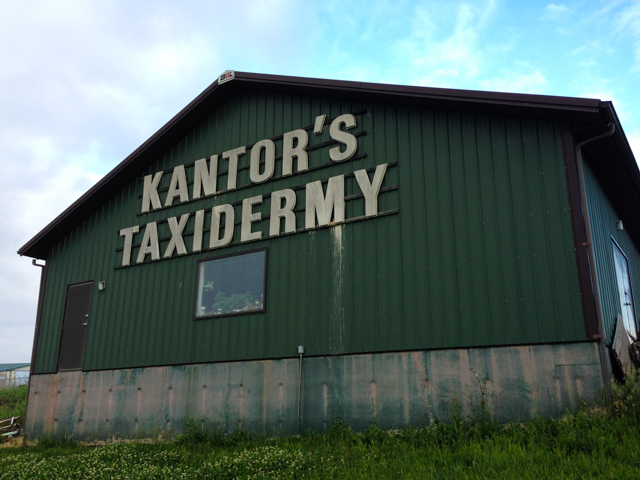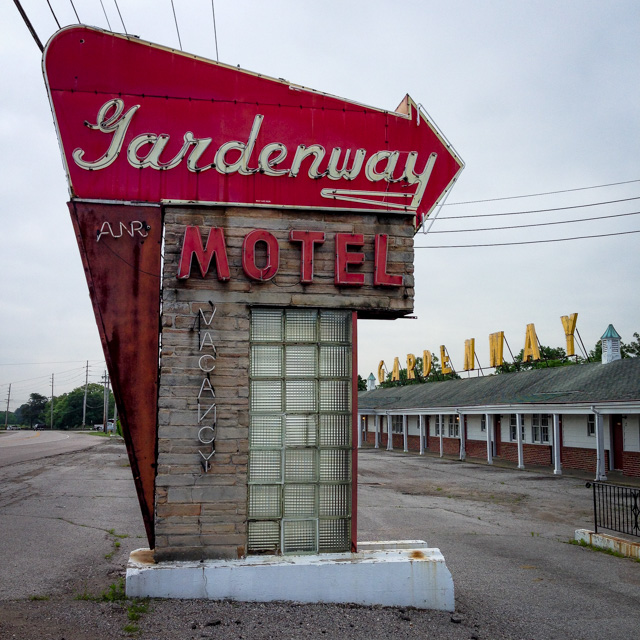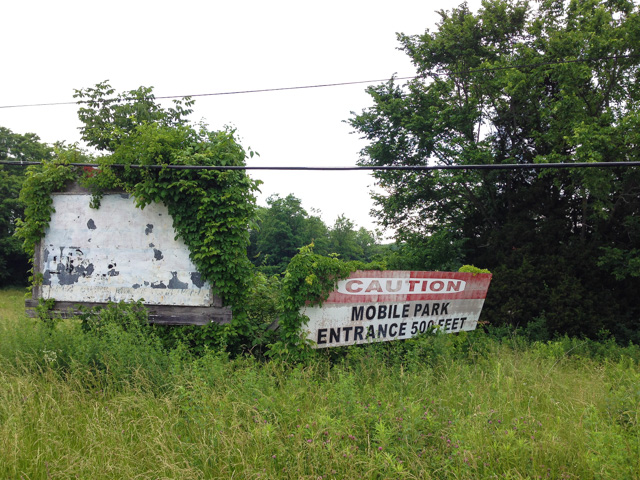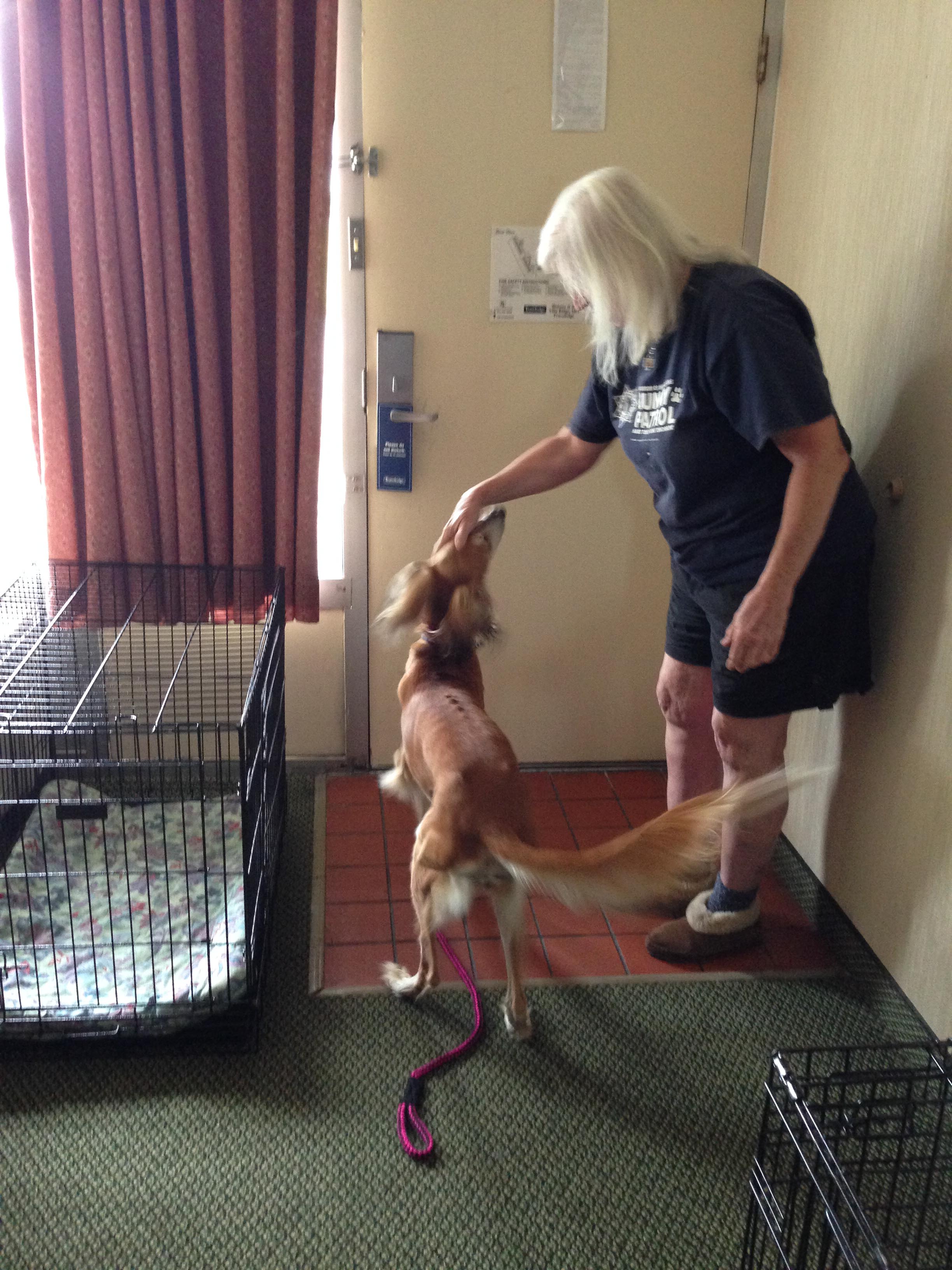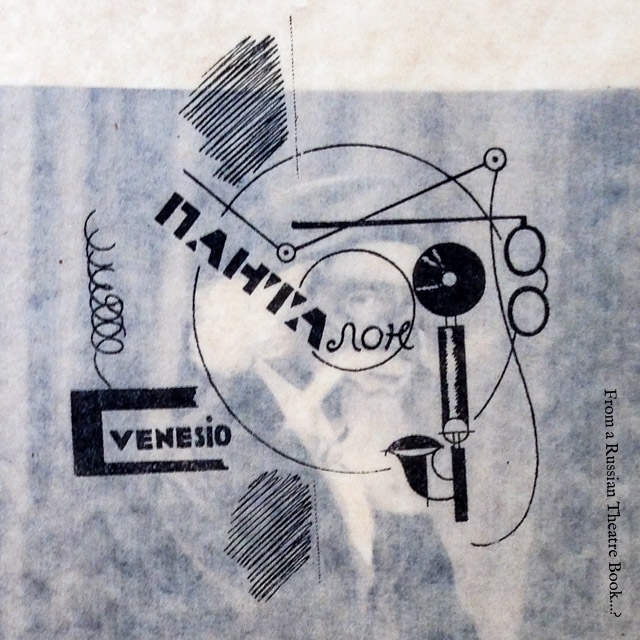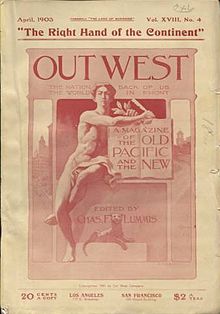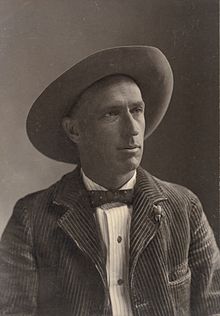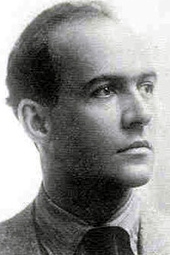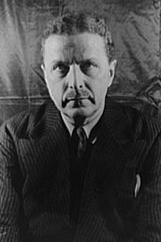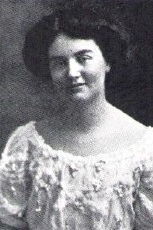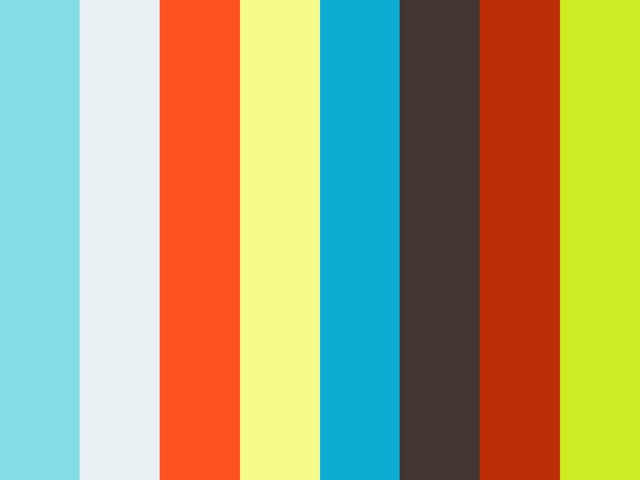A little video demonstrating the process of hand setting lead type for letterpress printing, in this case Alastair Johnston's translations of Max Jacob we printed at Thyrsus Press under the title "Omnia Vanitas".
A New Biography on Max Jacob by Rosanna Warren
Max Jacob is getting some noise in the press! Rosanna Warren’s Max Jacob: A Life in Art and Letters just got reviewed in the New York Times, The New Yorker, and the Washington Post:
Our copy just came in the mail and I’ve not read it yet. It is notable that this is out there. Before, Max’s torch had been kept lit mostly by poets who shared him with other poets inspiring the work of still more poets. When we began work on our book there wasn’t much out there easily to be had about Max and his life. We ordered a book in French, which after tearing the house upside down I cannot lay my hands on now, and a crumbling copy of the Gallimard edition of “Le Cornet a Des”, but that was about all we had.
“Three tangerines (one eaten), book, glass of wine” by Alastair Johnston of Poltroon Press
Some authors you come to through great marble portals while for others you find yourself swept up in a weird and gathering parade beginning on a Tuesday afternoon. We came to Max Jacob that way.
I’ve mentioned before we first heard of Max Jacob through a couple of Alastair Johnston’s translations in Alisa Golden’s Star 82 Review. When I read them there my ears shot up like a cartoon dog’s, complete with an exclamation point in a bubble over my head. I wrote Alastair, saying how great I thought they were and thus it came to be that we were entrusted to print those and the other translations he’d done decades ago when he was reading Max Jacob in the original French along with a circle of other poets who’d caught wind of him then.
Some months later we were at the press finishing up the original batch of poems when my phone dinged and up popped a new translation from Alastair, this from Poem (Sitting Ducks),
“I cannot enter this biblical landscape, because it’s a woodcut: I even know the engraver. When the Imperial generals’ hats are restored, everything is back to normal; I re-enter the woodcut and calm reigns in the desert of art.”
Doug and I looked at each other. We were going to be adding leaves to the book.
Another day at the press, as we were wrestling with a hair stuck in between an “n” and a space, another poem, Superior Degeneracy, came through, this one about a troubling voyage of a dirigible,
“But, ô balloon, take care! shadows in your gondola are stirring, ô unhappy dirigible! the aeronauts are drunk.”
And it went on like that.
Alastair’s translations are superior. They are thrilling and exquisitely tender. I admit to being hit with one or two while setting a page and finding myself weeping, like for instance this one from A Smile for a Hundred Tears,
“Springtime played bowls with the green trees & forty foals were thrown up by the valley.”
I love poetry for no reason but as somebody who goes after a cherry cordial chocolate because it tastes good and reaches for more and somehow comes to love all the ways it came to them, in this case through Alastair’s soul and wit and all there was that made Monsieur Max Jacob. I want to eat him up and am so excited about Rosanna Warren’s biography. I’m about to tuck in. You?
Check out our book, Omnia Vanitas, Translations of Max Jacob by Alastair Johnston for a rollicking ride with our friend Max.
-Jinny
You can buy our book here: https://www.thyrsuspress.com/sales/omniavanitas
And watch a flip through of Omnia Vanitas here: https://www.youtube.com/watch?v=kj9_NcPk8OY&t=19s
Or listen to Alastair read a handful of the poems in Omnia Vanitas read aloud here: https://soundcloud.com/search?q=thyrsuspress?
Omnia VanitaS, some of the poems
Alastair Johnston read a number of his Max Jacob translations at Jared’s Pottery soon after we came across a couple of them on *82, an online literary magazine published and edited by Alisa Golden. Just a few weeks previous he had agreed to let us publish them in book form.
Thyrsus Press at the Saluki National in Grey Summit, Missouri 2015-A Travel Log
Thyrsus Press got to go on the road last month! We set up a booth at the Saluki National, a specialty show, held yearly for the breed. Salukis are sighthound of ancient origin from the Middle East. My mother breeds and shows Salukis. Doug and I came to love the breed through Mom’s first Saluki, Aziza and soon we had our own, the sister of Mom’s Basheera , Bahjah, and Basheera's son named Elasa.
Fourteen years or so ago, I had gone back to school to further my studies in printmaking and it was about then that Aziza came into our lives, so the serious pursuit of printmaking and the love of Salukis came up at the same time. They work cheap as models, too, so I have a fair amount of personal work on the subject: mono prints, editions of small engravings. For the show I added five linocuts, a poster printed just for the event (printers love an excuse to make keep-sakes), and a line of pin-back buttons.
An early iteration of the poster, spacing not attended to yet. We decided an image of a running Saluki and a vertical format with less frippery would be better. It is a process!
All the work was somehow packed up in two large suitcases to head off on the first leg to Nashville, Tennessee, where my sister lives. Mom was up there when I arrived because we were going to turn around the following day to head to Huntsville, Alabama to prep the booth and package the prints and figure out how to load the car with all the things required for traveling with dogs for a show plus all that was necessary to set up vending. I forgot to mention Mom is doing all this having just had the cast removed from a broken ankle and was still hobbling around precariously much of the time in a massive boot! She had slipped and broken her ankle on the last bit lingering ice that had thumbed its nose at the coming of this spring.

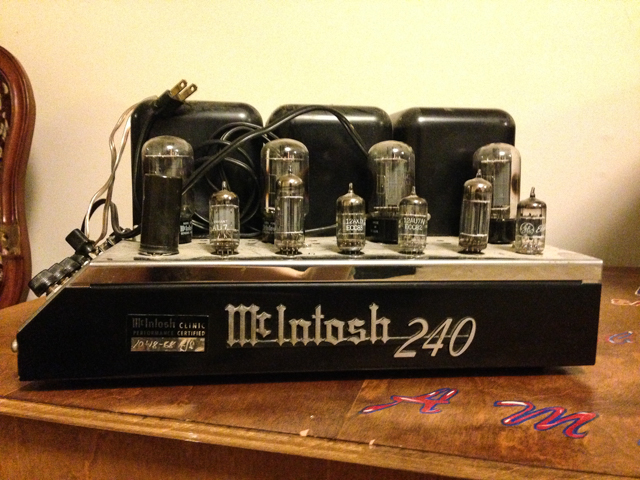


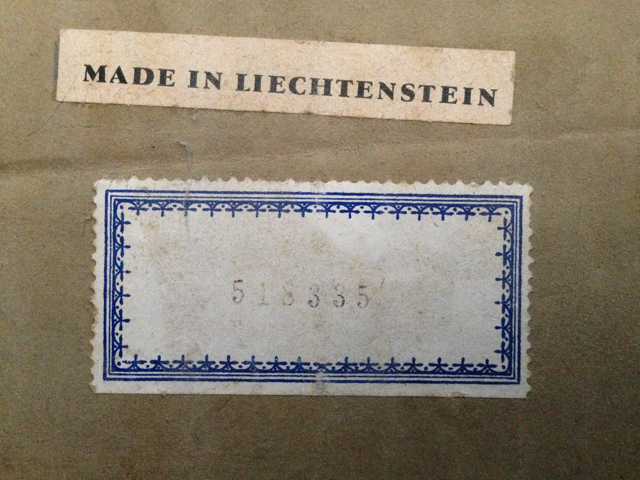
Got to catch visits with Dad over the couple days Mom and I were packaging prints. Dad and I talked cameras and photography, as usual, and on the golden age of Stereo. Dad is shown here with his Macintosh MC240 Power Amp. He is sending it to live with us in Berkeley! Before these pictures were taken I had just returned from a glorious misty, post-storm run that ended up between the river along the greenway and a manmade lake at a retirement community across the road from my parent's house. There was a riot of frogs and other cloaked night screechers, and as I stopped there exhausted post run, a heron flew in silhouette twenty feet away up the bank where I was standing. I have the best runs in Alabama.
Don't let his closed lips fool you, these guys are loud!
Somehow we managed to load up the van, got Clever Cephei tucked into her nice niche in the crate, and we headed out.
It could't have been more mild and beautiful-dreamy, really. It was slightly overcast and we talked and enjoyed several stops to walk Cephei around rest areas and were soon looking for places to stay for the night. We lucked into a Drury Inn, a chain we'd stumbled on when we took Priya up to Westminster last year and were needing a dog friendly hotel where we could leave the car near the Atlanta airport. The staff of this place is almost spookily kind---beatifically smiling at you like you've just arrived at a zen retreat at the top of a mountain. Amenities include: free dinner (food bar), ticket for three free drinks (bar bar), gym, free wi-fi, and breakfast bar. I did bar bar and gym, not to waste any opportunities, but only two red wines---Mom's second drink counted for two punches on the ticket.
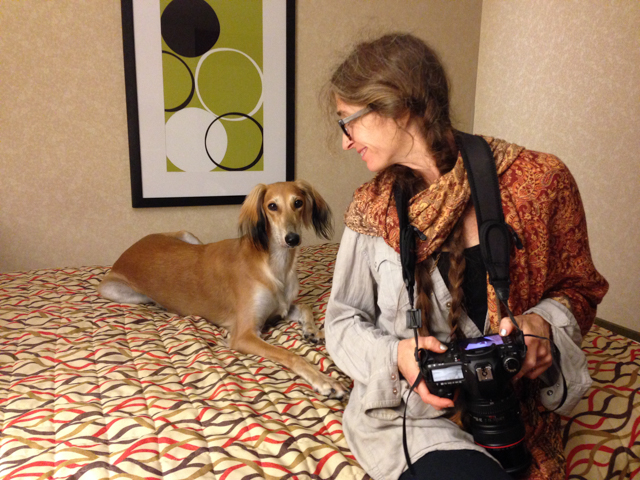

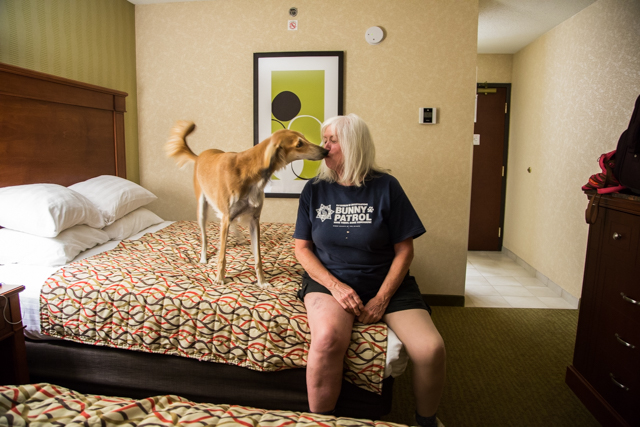


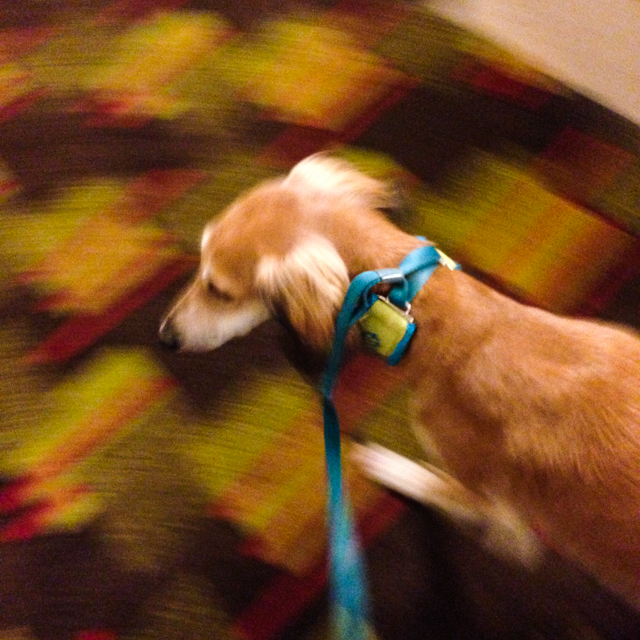

Cephei was experiencing lots of firsts on this trip, getting used to me among them, but she liked playing peek and run with me and we were fast friends. She learned about electric doors and glass elevators and a barrage of new stimuli---it was fascinating to see her process it all with her quick little mind.
Grey Summit is a tentative hold out out from the days of getting one’s kicks on route 66. The old hotel signs are still there, if the actually hotel is probably abandoned or converted into a Travelodge. Our hotel, once the Diamond Inn, now a Travelodge/Diamond Inn, isobviously the place to stay for Purina Farms visitors with dogs and cats. Around the back the rooms give on to a field that tilts into a wide and often misted hill on one side of Route 66. Nearby there is a grown over mini golf, a massive temple to fireworks with a sign that is meant to shout out to the main road from just off the exit. Further up the road are charming white homes, an array of mobile home parks and (explored on dawn and twilight runs) a cemetery with some old, old tomb stones. There was prairie restoration going on in the area, evidenced by a profusion of wild flowers, though mixed in were some escapees from cottage gardens-roses, irises…and a din of insects and birds in the grown over spaces. Traveling with puppies, Mom and I were usually out walking around the hotel around 6:00 am, along the field and through the wide, gravelly parking lot for trucks.
Arrival in Grey Summit was a big time for reunions-Ron, an accomplished handler who shows Mom's Salukis, was there soon after us and brought Epsilon and Priya with him from their tour of showing. There was a sweet reunion there, though Cephei had to be reminded what fun brothers can be.
We got to see how those who do the show circuit with the whole trailer outfit set up their sites at Purina Farms and had a couple visits with friends. While Mom caught up, I wandered around the verdant grounds which were giving off rising insect whirrs with the rising of the moon and all was redolent with honey suckle.
The show itself was a blur! So much happened and the booth did really well. I met so many Salukis that melted my heart and connected with some really, really neat people.


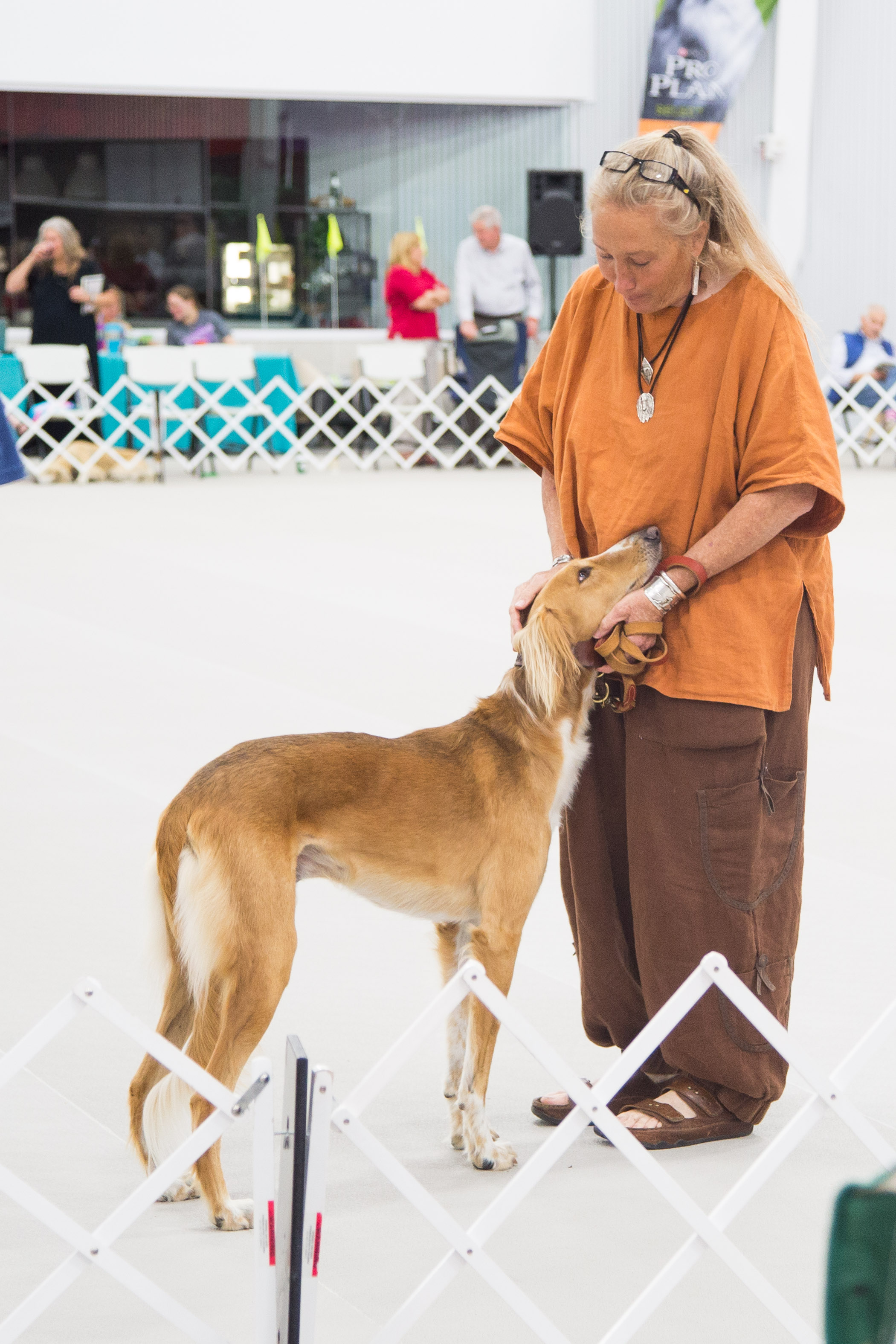





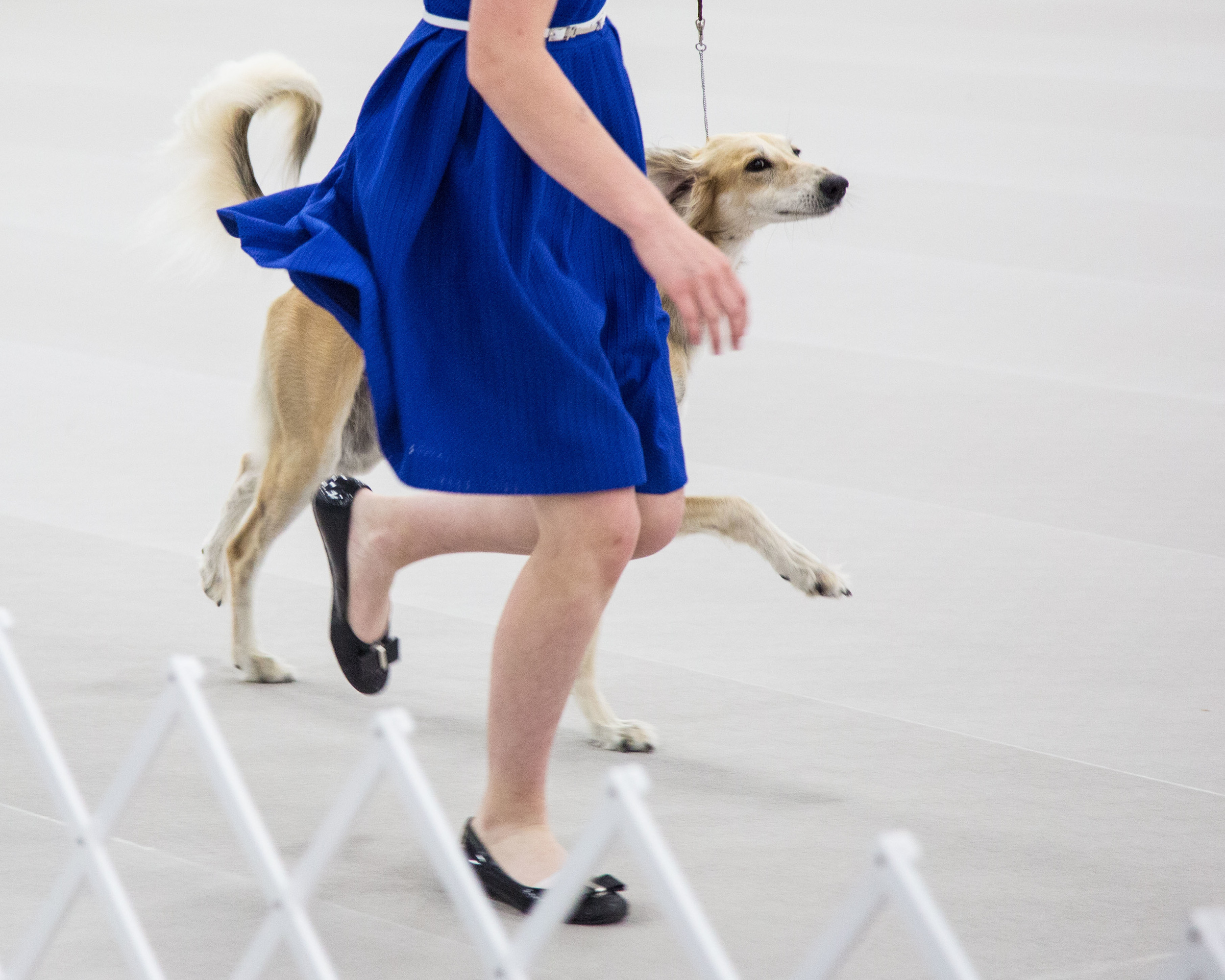

Epsilon and Priya and Cephei all showed (Priya was in the Top 20 for the year). Epsilon took futurity. The top 20 was a hoot—the Salukis and their handlers were all done up Age of Aquarius style (I forgot what they actually called the theme). Ron rocked a Pink Floyd shirt and blue John Lennon glasses while Priya was a happy hippie Saluki chick.
I even got to go in the ring a couple times, once to help in the brood bitch class and once in the costume class, which was tremendous fun, on the last night.
This was the night of the auction and people were good and likkered up. Terrific, terrific wine was offered for tasting by Röbller Vineyard. People were raving about the stuff in the blue bottle, Vidal Blanc, but I went for a lovely red—Le Trompier Noir…and went back for seconds. We stayed to watch the very very entertaining auction and were up later than we should’ve as we had to wake very, very early the next morning to load the van for final day check out and to get to the site to show all the Salukis in the brood bitch class. This was Cephei’s first time in the ring! Ron did his dog whispering hoo doo on her and she went in like a pro despite all previous signs to the contrary. She is a drama queen and was commanding a Medea-style performance, but there she was like Audrey Hepburn at Ascott Opening Day—without the “Dover, move yr blooming’ arse!!!!” explosion at the end. He pulled this off with another dog, too—I got to watch the whole process—dog went from bucking and ducking away to cheerful compliance in no time. Amazing.
We watched Best in Show, packed up the whole she-bang, and pressed through back to Nashville where, loopy from sleep deprivation, we went for late Mexican with Lil, my sister and the girls. There, the patriarch of a large family was having a birthday bash accompanied by a kick-ass Mariachi band, to which we danced heartily. That could be watched by one vantage point, while on a big screen tv on the other, Lucha Libre wrestlers splattered a confetti of blood, also keeping time to the Mariachi.
On Finally Visiting the Letterform Archive
Last weekend we went to a reception held at the Letterform Archive in San Francisco following the Typo15 conference. Rob Saunders, the creator/collector of the archive, gave an entertaining talk on W. A. Dwiggins last year at the San Francisco Public Library and we'd browsed the rich online collection, but despite reports that we really needed to go to the place, we hadn't made it until last Saturday. Go online and see the archive absolutely, but if you happen to be a local or just blowing through*, then hie thee...uh... there.
*for, as Oscar Wilde (or was it Gandhi?) is said to have said "It's an odd thing, but anyone who disappears is said to be seen in San Francisco.")
Type specimen books at the Letterform Archive.
Kate Robinson, the Curatorial Assistant said they like to schedule visitors in groupings of at least a few because not simply as a matter of convenience, but for the sheer serendipity. This person asks about this, that about that and you end up in places you hadn't considered.
Kate Robinson, Curatorial Assistant at the Letterforms Archive sporting her pressmark on her left arm.
Kate took us upstairs when we arrived and started pulling from the long shelf of Dwiggins matter, and as we were looking at that, another guy came up looking for Adrian Frutiger materials. Rob Saunders had told him to see the work of Walter Käch, who had been Frutiger's teacher.
Käch!
Also Käch!
aaaaand Käch, too.
So then Saunders pulls out this great book of Käch's catacomb rubbings...
Bildzeichen der Katakomben, Walter Käch
And another guy, a teacher from Iran, gone through the Bay Area and now teaching at Oklahoma State, was interested in El Lissitzky and Rob pulled a bunch of goodies including...
This...
And this...
and it lead somehow or other to a Fry & Co. type specimen sheet with teen-incy (that is southern for itty-bitty) Diamond body sized type...Here is the guy Rob was showing the Käch to, trying to make it out. They call it the size "diamond" because you need a jeweler's loupe to read it.
Reading the Diamond type of
I made this in black and white because my fingernail (included in the picture for relative size) is appallingly filthy. Black and white takes a bit of the gross out. You are welcome.
Below are even more pictures from our visit:
This is Rob pointing out Ladislav Sutnar's book on modern design. There is a Kickstarter campaign for a gorgeous facsimile edition in the works (attention to ink and paper stocks, etc). We got in on it.
Rider was in it for the food and the little shop dog - what a spread!
A Broadside for Nora May French
Today, Thyrsus Press celebrates the brief life and melancholy verse of the nearly forgotten California poet, Nora May French, whose final work, The Mourner, serves as the subject of our new broadside.
Although born in Aurora, New York, in 1881, she soon moved with her family to a ranch outside of Los Angeles. French’s uncle was a stern Presbyterian minister by the name of Henry Wells, whose thriftiness and business acumen led him to great success as one of the founder of Wells, Fargo, & Co. Sadly, his good fortune did not rub off on French’s side of the family, which suffered a series of devastating set backs in their new home including a house fire and a failed fruit crop.
While studying at the Otis Art Institute, she became engaged to a wealthy Santa Cruz timber merchant, and notorious womanizer, named Captain Alan Hiley. Hiley ultimately refused to leave his wife for her, leaving her heartbroken, but the experience inspired her to take up the pen and led to the creation of her most ambitious work, a 22-poem cycle called The Spanish Girl.
Source: California Faces: Selections from The Bancroft Library Portrait Collection
The success of The Spanish Girl drew her into the circle of California writer and preservationist, Charles Lummis, who published her work his the regional magazine, Out West, which was designed to seduce frigid north easterners with tales from “the right hand of the continent”.
French eventually found her way to post-quake San Francisco, where she dated Henry Anderson Lafler, literary editor of The Argonaut, and befriended humorist Gellet Burgess. She lived with her sister, Helen, in a apartment at 415 Lombard Street and worked as a "Hello Girl" at the switchboard of the nascent Pacific States Telephone Company - an experience that she documented in an article in the Saturday Evening Post entitled "The Diary of a Telephone Girl".
The Saturday Evening Post, Volume 180, Issue 2, October 1907
Distraught over her failed relationships and her inability to support herself as a poet, French retreated to the bohemian resort of Carmel-by-the-Sea, where she boarded with poet George Sterling and his wife, Carrie. Despite the company of her new friends, French's spirits did not improve. Following an aborted attempted on the life of a former lover, French took a fatal dose of potassium cyanide, purchased from a local chemist under the pretext of needing it to clean the silverware, and died in bed on the night of November 13, 1907. She was 26 years old.
James Hopper, Herman Scheffauer, Harry Lafler, and George Sterling at the Bohemian Grove, 1907. (Source: UC Berkeley, Bancroft Library)
Although displaying an occasional tendency towards sentimentality (her poem about a late cousin’s devoted dog springs to mind), French’s poetry contained far less of the archaic pomposity and obsessive self-mythologizing that characterizes the work of other Western poets of the period. Her poems were spare, fragile, personal and intimate. Many evoke Sappho in their directness and in their celebration of the sublime experience of nature and the pangs of unrequited love.
French felt ill at ease in the company of other people – particularly women – and struggled to find a place for herself, even in the company of California’s self-styled Bohemians. She considered herself “queer” and had “an idea that all sensible people will ultimately be damned”.
The Los Angles Times summed up her death with the following extended headline:
“By Her Own Hand.
Young Woman Ends Her Life
Rises at Midnight Hour and Takes Poison
Young and Beautiful Woman Who
Has Written Verse for Magazines
Carries out Suicidal Impulse Long
Entertained—Father and Sister
Residents of Los Angeles.”
San Francisco Call, Volume 102, Number 169, 16 November 1907
Several years after her death, a group of her friends, including Lafler, Sterling, and Porter Garnett, published a collection of her poems, but interest in her work rapidly waned and she has been largely forgotten. We hope that this small broadside might reignite at least a bit of renewed passion for this undeservedly neglected poet.
Spectric Poetry
When we established Thyrsus Press and decided to become publishers as well as printers, we had three goals in mind: 1) to publish the work of contemporary writers that we admire, 2) to revive the work of neglected historic writers (particularly those with bohemian or, at least, anti-social tendencies), and 3) to never take ourselves too seriously.
We were also seeking to push ourselves out of our zone of comfortable complacency and to utilize all of the tools and techniques at our disposal - including both relief and intaglio printing, traditional metal type, collographs, monoprinting, and more. And with these principles as our guide, we have been driven to embrace our forebears and inaugurate a new series of broadsides based on the work of one of modern poetry's least heralded movements: the Spectric Poets. We've kicked off this series with a small, but unruly little handbill depicting the poem, Opus 6, by the distinguished poet and father of the Spectric movement, Mr. Emanuel Morgan (broadside depicted below).
"Opus 6": No. 1 in the Spectric Poetry Series
The illustration is a photo-etching based on a image that Jinny captured at San Francisco's Musée Mécanique - one of the world's largest collection of early 20th century penny arcade games and instruments. The type is a grab bag of incomplete - and sometimes damaged - fonts that we have rescued from destruction over the last year or two. We ran it once through our etching press and thrice through the platen press.
But now a bit of background on the poem itself. The Spectra poets, whose eponymously named debut was privately published in 1916, were a collection of experimentalists dedicated to the proposition that "the theme of a poem is to be regarded as a prism, upon which the colorless white light of infinite existence falls and is broken up into glowing, beautiful, and intelligible hues." Or, in the words of the movement's co-founder, the deliciously named Anne Knish:
“Just as the colors of the rainbow recombine into a white light - just as the reflex of the eye’s picture vividly haunts sleep - just as the ghosts which surround reality are the vital part of that existence, so may the Spectric vision, if successful, synthesize, prolong, and, at the same time, multiply the emotional images of the reader.”
The book that started it all: SPECTRA! (Source: Wikipedia)
The Spectrics were quickly embraced in the welcoming bosom of the burgeoning American avant-garde. No lesser a luminary than Edgar Lee Masters, the Pulitzer Prize winning author of the Spoon River Anthology, endorsed the movement. In his letter to Emanuel Morgan, Masters proclaimed that “You have an idea in the sense that places do have an essence, everything has a noumena back of its appearance and it is this that poetry should discover."
Even the non-literati took note of the movement. Thomas Raymond, the conservative Republican nominee for mayor of Newark, New Jersey, was quoted as saying that he had “decided to avoid political issues and to limit his campaigning to readings of Spectra and Walter Pater”.
As Spectra fever swept the country, Morgan and Knish were joined by another supplicant at the altar of prismatic poetry, Elijah Hay. Together the three found great success, with their work appearing in many of the the leading avant-garde journals of the day, including Others, Poetry, and The Little Review. William Carlos Williams, one of the leading experimentalists of the era, corresponded with Hay, stating that he preferred his and Morgan's work to that of Ms Knish because (like most women) "A.K.’s things suffer from too much theory".
Inevitably, the movement spawned a backlash. It's critics included a group of students at the University of Wisconsin at Madison who in 1917 created a parody of Spectra called "Ultra-violet poetry" and published a series of pastiches under names such as “Manual Organ” and “Nanne Pish".
Despite the excitement that surrounded their poetry , the Spectra movement proved to be short lived. By 1918, its leading lights had ceased publishing and the movement faded back into the obscurity from which it had emerged.
All of this is both completely true and utter bullshit.
The Spectra poets were, in fact, a poetically inclined Harvard aesthete (and friend of the mystic Khalil Gibran) named Witter Bynner [Emanuel Morgan] and his friend and fellow Harvard grad, Arthur Davison Ficke [Anne Knish]. They were later joined by Marjorie Allen Seiffert, a wealthy woman from Moline, Illinois who wrote under the name Elijah Hay.
Their aim was to mock the pretensions of such pre-WWI modernist movements as the Imagists and Vorticists, as well as their continental compatriots, the Futurists and Dada poets. However, once the hoax was finally revealed and the poets began to publish and promote their "own" poetry in honest sincerity, most critics were not shy in advancing the belief that their parodic verses were superior to their official efforts. Bynner himself could not entirely disagree, remarking: “Once in a while we think so ourselves.”
By 1918, the Spectra hoax had run its course and Bynner moved to Berkeley where he was hired as Professor of Oral English for the Student's Army Training Corp., a kind of precursor to the ROTC. When this military training program was discontinued in 1919, he was asked by the English Department to stay for another year and teach a class in poetry writing. He taught most of his classes outdoors, on the side of a hill below the Greek Theater, and often invited favorite students to his room at the Carleton Hotel on Telegraph where he hosted a kind of literary salon. He was beloved by his students who published an extremely earnest collection of verse in his honor titled, WB in California. The book contained such unforgettable gems as this:
“Those happy hours in Bynner’s room
For you and you and me
Will ever strum a tender note
In days that are to be.”
Witter Bynner in Japan, 1917 (Source: Jacket Magazine)
Other local scribes were far less reverent, however. Bynner's notoriety attracted the attention of Harry Noyes Pratt, a local poet of some renown who would later go on to become editor of The Overland Monthly and art critic of the San Francisco Chronicle. Noyes considered himself a kind of guardian of the regions native son's and daughters apparently took umbrage at this young arriviste who wrote in free verse and had the audacity to criticize California poetry. Bynner dismissed the work of Ina Coolbrith, the doyen of the nascent Bay Area poetry scene and the first California Poet Laurete, as "commonplace but gentle".
Noyes called Bynner a "near poet" and publicly rebuked him (and other modern poets) for sweeping away "the normal stadards of beauty in nature" and replacing them with "grotesque fantasies". So, in just a few short years, Bynner had gone from mocking the moderns to being mocked as one himself.
In the end, it seem appropriate that Noyes (and perhaps Bynner himself) is now best remembered for this bit of doggerel:
“Fame chewed his pencil, scratched his head,
Fame—worried-frowned, and puzzled said:
I’ve known ‘em all, both saints and sinner;
but—who the hell is Witter Bynner?”
Sources:
Berkeley Bohemia: Artist and Visionaries of the Early 20th Century, by Ed Herny, Katie Wadell, Shelley Rideout, published by Gibbs Smith, March 19th 2008
"Marjorie Allen Seiffert and the Spectra Hoax", Jacket Magazine, No. 17, June 2002
Article on Spectra, http://sniggle.net/spectra.php
"The Spectra Hoax", Davenport Library Blog, December 8, 2010
Spectra (book), Wikipedia article
Spectra - Complete Text on ecclesiastes911.net
Of Imprenta Ochoa's and Pharaoh's Ink
Doug got wind of free letterpress ink on Briar Press the day before yesterday. Several calls later we were given an address in Oakland and a code for a lock box. We were instructed to let ourselves in. The shop sign saying "Imprenta Ochoa’s" on one side and "Ochoa's Printer" on the other in cheerful chunky letters gave it the impression of being a very much occupied workhorse of a printing business, but after fiddling with the lock box and cracking the door open it was pure spooky abandonment-dark, despite the appearance of the photo below.
Open for?
So out came the iPhone flashlights and we peered around. There were tools for moving and clean up. Strange how the last things left are the most anthropomorphic—a broom, so worn the bristles bent off at a wild angle, leaned exhausted against a door jam; a ruminating chair, a small table not sure how to let go of his life of formal service, there to the end. We didn’t see any ink. Most the machinery was gone but for some kind of camera that seemed pretty bombed out—got the sense it worked with carbon arc?
After I had blundered into a closet and washroom Doug called from a back room through a narrow hall where the ink hoard was amassed on a shelf and in boxes on the floor—our eyes opened wide-there must have been three hundred cans of letterpress ink! Of course the excitement was heightened by discovering the ink the way we did, in the abandoned shop in the gloom. It was like Howard Carter’s account of the first glimpses into King Tutankhamen tomb.
“At first I could see nothing, the hot air escaping from the chamber causing the candle flame to flicker, but presently, as my eyes grew accustomed to the light, details of the room within emerged slowly from the mist…[ink ink ink and ink!]”, Howard Carter, 1922
Doug impersonating Howard Carter shining the first light in ages inside King Tut's tomb.
Also out back, scattered in mat of blackberry thicket, we found fistfuls of reglets and furniture. Thank You, Thank you, Thank you Ochoa's! We'll put it to good use and think of you. I'd love to know more about the establishment, if anyone knows.
The haul---which begs the question "uh...where we gonna put it?"
Cool ink lid!
Celebrating Denise Levertov at the Watershed Poetry Festival
Jin and I were honored to be asked to produce the official broadside for the 19th Annual Watershed Environmental Poetry Festival, held in downtown Berkeley, California on September 27, 2014. The 2014 festival, which is organized by the amazing folks at Poetry Flash magazine, was dedicated to the memory of the late, great Denise Levertov. The poem selected for the broadside this year was Levertov's "The Breathing" - originally published in "Poems: 1960-1967", © New Directions Publishing, 1983. It's such a delicate, luminous poem and it was a great honor for our young press to have been given permission to print it. Big thanks to Alastair Johnston at Poltroon Press for recommending us for the job!
Thyrsus Press broadside of "The Breathing" by Denise Levertov for the 2014 Watershed Environmental Poetry Festival.
As usual, the festival kicked off with a walk from Strawberry Creek on the UC Berkeley campus to the Watershed festival, led by poet Chris Olander (who recently gave us permission to print one of his terrific poems). The day included readings from a slew of other fantastic poets and environmental authors including Pulitzer Prize-winner Kay Ryan, the great Anne Waldman, California Poet Laureate Al Young, and many more.
One of the highlights of the day was a reading of Denise Levertov's work by all of the major poets in attendance. It was a beautiful experience to hear her work read by so many wonderful voices. Levertov, a British-American poet whose career spanned the period from WWII to the late '90s, was a prolific and sensitive writer and teacher. He work ranged widely in both style and subject matter, touching on relationships, the environment, and anti-war activism. Joyce Jenkins of Poetry Flash told us stories of Denise's earlier participation at Watershed and made us wish that we had been there to hear her ourselves. In lieu of that, however, check out this great sound recording of the poet on the Poetry Foundation website.
Typewriter poetry at Watershed 2014
Happy Belated Bartlemas!
Did you know that yesterday was a very important holiday for those of us involved in printing and bookbinding? Yes, indeed. It was St. Bartholomew’s Day! Otherwise known as Bartlemas.
Bartlemas was an important feast day in the Christian calendar and a celebration day for tradespeople of all kind, but particuarly printers.
Feast days were often used as community reminders for important activities. For example, Bartlemas was regarded as a signal for agricultural workers to sharpen their tools for the harvest. Appropriate, since St. Bart was flayed alive and is often shown holding his knife. Although few artists took this iconography as literally as the obsessive northern Italian sculptor, Marco d'Agrante, who depicted his St. Bart in full fleshless glory in the transept of the Cathedral of Milan.
Gruesome sculpture of St. Bartholomew the Apostle by Marco d'Agrate, 1562 - found in the Duomo of Milan. [Source: santossanctorum.blogspot.com/]
This also made him the the patron saint of all the "knife-wielding" professions, including butchers, cobblers, leather workers, tanners - and bookbinders.
The bookbinders connection linked Bartlemas with a medieval holiday for printers. August 24th marked the shortening of the days and the need to light candles to work by. To aid them in their work during the waning days, the journeyman printers received a special payment for candles that was traditionally spent (in part?) on roast goose. By the late Victorian era this had somehow morphed into a day off to visit the seaside (after a raucous party in the print shop) - but even today it is still called a wayzgoose by nerdy printers everywhere. Although the origin of this term is uncertain and it is possible that it originally had nothing to do with geese. It was more typically the custom to roast a pig on Bartlemas - but perhaps the journeymen's candle fee was too small to afford that luxury.
It was also the day that paper makers cleaned out their vats and printers replaced the paper "windows" of their "chapels". Did you know that up until the 20th century printing shops were sometimes called “chapels”? I didn't know that. Supposedly this was because they evolved from medieval scriptoria where monks painstakingly wrote and illuminated their manuscripts -and because they had tall ceilings and big windows.
"Printing Shop," from Alexander Anderson Scrapbooks, vol. 1; 19th century; Alexander Anderson (American, 1775-1870); wood engraving; New York Public Library, [Source: http://www.bgc.bard.edu/]
August 24th was also the traditional day of the "Blessing of the Mead" in Cornwall. Coincidence? I think not.
It has been said that on August 24, 1456 the printing of the Gutenberg Bible was completed [1] - thus triggering the first wayzgoose party at a print shop. (Or so people like to imagine).
The connection between St. Bart and printers may also have been strengthened by the fact that in the late 18th century, the Lady Chapel of the Priory Church of St. Bartholomew the Great (AKA Great Saint Bart's) had been temporarily turned into a printshop - it was here that Ben Franklin served his journeyman apprenticeship. [2]
By the way, Bartholomew was supposedly an obscure disciple of Jesus that preached in India and Armenia. His name means "bar-Tholomeus", or "son of Ptolemy" - which suggests an aristocratic lineage.
Regardless, it seems that Bartlemas has always been a popular day for fairs, including the famous medieval Smithfield fair in London that was immortalized in Jonson's play, Bartholomew Fair - a location peopled with "balladeers, stall holders, prostitutes and cut-purses".
Bartholomew Fair by Benjamin Robert Haydon. [Source: http://www.bbc.co.uk/]
But like virtually all Christian festivals, this one had Roman roots. August 24th was the first day of the Roman Feast Day of Mania - named for the manes or ancestral spirits - as well as Manea who was an Etruscan/early Roman goddess of the dead. It was a feast day for these spirits as well as the goddess Ceres. The first day of the feast was celebrated by the opening the Mundus Cereris, or the "Pit of Ceres", which was an underground vault in the shape of an inverted sky. In 1914 Giacomo Boni discovered a subterranean structure on the Palatine Hill that he believed was the Mundus.
Mundus cum patet, deorum tristium atque inferum quasi ianua patet. [Source: Wikipedia]
The cover was opened and the first fruits of the harvest were offered to Ceres. But because the Mundus was also an "Ostium Orci" - or Gate of Hades - you had to be very careful on this day since the spirits of the dead were free to roam (the pit was also opened on November 8th - which contributed greatly to the trappings of our modern day Halloween).
Anyway - Happy Bartlemas!
[1] One of four copies of the Gutenberg Bible kept at the Bibliothèque nationale in Paris contains a note by the rubricator and binder, Henricus Cremer, seeming to indicate that the volume was completed on St. Bartholomew's Day.
[2] From Franklin's autobiography: "I immediately got engaged at Palmer's, at that time a noted printer in Bartholomew Close, with whom I continued nearly a year. . . . I was employed at Palmer's on the second edition of Woolaston's Religion of Nature".
Grotesque Type and an Indian Pilot
A font of Grotesque No. 9 from the now defunct Stephenson Blake Foundry of Sheffield, England.
Jinny and I rushed out to greet our postwoman earlier this week as she trudged to our gate with another heavy bundle of packages for Thyrsus Press. This one contained not one, but two treasures from abroad.
The first of these is a font of 60 point caps and figures in a sturdy old workhorse of a typeface known simply as "Grotesque No. 9". It was produced by the venerable English foundry of Stephenson Blake which operated continuously from July 1818 until its final dissolution in 2005.
Our lovely unused type.
The foundry, based in Sheffield, England, started as a small regional operation but soon entered the big leagues when they stumbled onto an opportunity to buy a portion of the legendary Caslon foundry in November of 1818. The type they cast was considered the most precise in the UK. By the turn of the 21st century, however, with demand for metal type dwindling, they sold everything of value - including the original matrices for such historic typefaces such as Caslon Old Face, Baskerville, Bell, and Fry’s Ornamented. These mats ultimately made their way to the collection of the Type Museum in London.
Original Stephenson Blake Foundry (Source: British Letterpress)
The design of Grotesque No. 9 is credited to Eleisha Pechey, who also responsible the Windsor typeface, which is familiar to anyone who has seen the credits to virtually any Woody Allen movie - or the titles to the great 70's sitcom, "All in the Family".
However, this attribution is a little confusing since the Linotype website states that Pechey was put to rest in 1902, four years before Grotesque No. 9 was officially released.
In any case, the type in question is a great example of the sturdy san serifs that were common in both Britain and America at the turn of the twentieth century. This stark and imposing face was chosen by Wyndham Lewis to set the tome of the manifesto pages of his vorticist magazine, BLAST, in 1914. It later became a favorite of English television designers in the fifties, sixties and seventies.
Vorticist manifesto in Grotesque No. 9 (Source: The Vortex Press)
Grotesque No. 9 type specimen page (Source: eBay)
Our other new arrival was a etched copper plate of what appears to be an early Indian airplane pilot, that we acquired from an eBay seller in Uttar Pradesh. The seller claims that it is over 80 years old. I have no idea who this gentleman is, or what kind of vessel he captained. I only knew that we had to have it. We welcome comments from anyone who might be able to tell us more about this image or the person depicted.
A dashing aeroplane pilot - or so we think...
We have no idea what project we will use these for yet, but I'm sure it will be interesting.
Business Cards for Photographer Dinah DiNova
Dinah's card locked up and printed.
Last week we had the privilege to make up some business cards for the photographer Dinah DiNova. We've been following her career for some time now-we first crossed paths with her when we were living in Portland, Oregon. Her photography ushers forth from a visionary ecstatic lifestyle that cleaves much much more closely to a dream state than most of us can manage. The image of tin cans trailing a newly wed's car comes to mind; she's tied right up by the bumper. Her work runs the gamut from wet plate collodion to pixels and never loses grip. She is a photographer to the very marrow. Her work can be viewed at: http://www.dinahdinova.com and here's an interview with Dinah (also found on her site's "about" page).
The card utilizes the beautiful Unger Fraktur (1793) for her name and Richard Austin's Bell Italic and small caps (1788) for the rest. It is on nice, thick stock---beautiful in the hands.
Upside-down view of her card in the chase---(seeing how it would look on our ceiling).
"Making Do" product packaging...note to self---buy the business card boxes already.
The Things You Find...
It was folded---opened to the giant "PEACE!".
It is the first day of Rider's summer break. He bikes while I run and we take a different route through Strawberry Creek, onto a little greenway that trails behind the BART station to Cedar Rose Park. Much to Doug's chagrin, I am always dragging stuff back from runs---fishing lures from the early 20th century, loteria cards, spy cameras, a large wild cat's tooth set on a silver chain (I am at a loss what to do with it---it is terrible, but I feel it carries a karmic load I am supposed to answer for somehow), spooky channeler/self help cassette series droned on in bizarre accents, letters from prizon scattered along Hayes Street in SanFrancisco---on and on. I did a list poem in Bill Berkson's class at SFAI under that prompt, "Things I've found". Twenty five years of jogging at least 5 days a week makes for a lot of finds---and it has been twelve years since Berksons class so need to write part two, if only as a catalogue. Anyway, today it was this: newspapers from 1945 declaring the end of WWII bundled with a Satuday Evening Post from 1911. Rider and I chilled out under the picnic table (now jauntily sporting an umbrella our friend Lolly gifted us) as we browsed the Saturday Evening Post ads circa 1911 and ate plums also got from the run-an offering in front of someone's house. Later I was on the phone telling Doug about the find when I turned around to see Rider on the couch catching up on the latest from 1945.
What's new?
Super Awesome!
We got word of a zine-fest associated with Oakland Museum's current Super Awesome! exhibit that celebrates the art and influence of the wonderful Giant Robot magazine. It was one of their fun "Friday Nights at OMCA" events, where the museum stays open until 9pm. So we went last Friday despite a school event we were supposed to go to. Rider dined and dashed with pizza slices flopping over the edge of his paper plate, leaving a trail of baby carrots. I wish there were more of this kind of activity around (and less potlucks). It was a blast! We picked up an array of zines while really enjoying the upbeat dj. Rock, Paper, Scissors Collective was there and we got a nice stack of inspiring little pieces for just a buck or two each and got to talk with an excited young artist who was representing for them. I love young art kids---feel tremendous maternal benevolence towards them. (In art school, as I went back at the age of 30, one professor called me the mother of the lost boys-a stretch, perhaps, but he nailed my emotional landscape there). We hit Tiny Splendor while Rider added Post-It pictures to their Post-It art wall.
One of Rider's Contributions to the Art Wall.
We love Tiny Splendor's aesthetic and Risograph loveliness-already had a bunch of their publications, but got a few small things. We also picked up some stuff by my new favorite zine artist, Teppei Ando - kinda wish now we had gotten more! Plus, for these events the food trucks come... and there was a band outside - a really festive atmosphere! Unfortunately we were having too much fun to stop to eat and by the time we got out there they were about to drive away. We did take a break to enjoy the herons that haunt the pond there (while contemplating the ethics of the recent tree pruning scandal... or not... herons are rather inscrutable, I find).
Here un dere were herons.
The Super Awesome exhibit was jolly fun, too. Near the entrance was a great film of Giant Robot imagery flashing in sequence...





There were button machines, too! (Got into buttons while living a summer in Philadelphia and hanging out on South Street when I was a preteen-punk buttons and neon dyed army surplus!!!)
Which reminds me of two things---gotta tell about that summer as a Pennsylvania Ballet student from getting locked up in the house of a mad woman who's teenaged son turned tricks to ending up rooming with Charles Bronson's step daughter, a valley girl and another one like her --- and that someone in the zine fest was selling "Post Punk is Not Dead" patches. Wanted one, but they were also selling vegan propaganda and now I eat fish and was wearing a yard sale leather jacket, so I felt weird about it. There was a "Sleeve Face" photo op site!


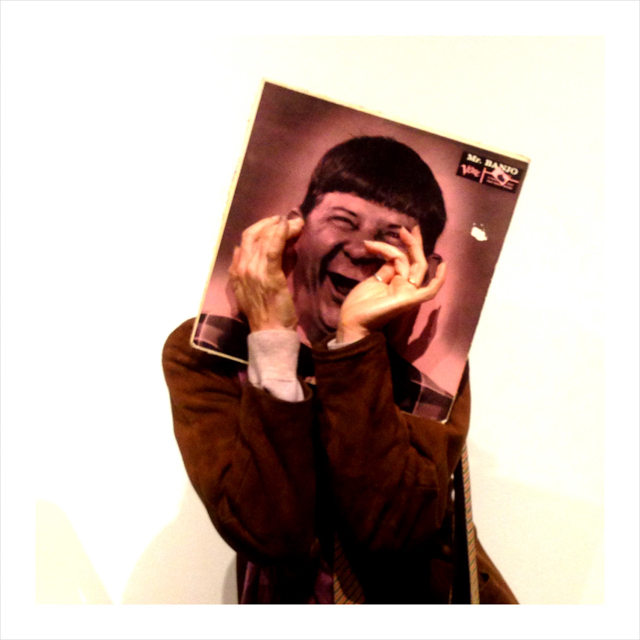
and a video game car,
and more video stuff---
Also there was a great wall of photos... from various publications by Mr. Hamburger Eyes (aka Ray Potes) blown up in a grid. I really wish we'd picked up some of his zines --- they were in the salon, too. There was too much good stuff there, and they were in the back, so we were kinda done spending for the night. Anyway, a terrific photography/design aesthetic --- wanted to ask the Hamburger Eyes guy (Ray?) more about his printing (mostly black and white, photo based) but he was kinda too hip... in my memory he was sitting behind a mixing board with headphones around his neck, but he wasn't the dj and no music was coming from him... do I just imagine that? The books were spread around and in front of him. Everything around him had the feeling of being part of his entourage.
Wayzgoose all the Way in San Jose
Display Press at the Bay Area Printer's Fair and Wayzgoose.
We almost forgot to go! The Bay Area Printer's Fair and Wayzgoose was held yesterday down in San Jose http://printersguild.wordpress.com. It is the first Wayzgoose (at least that actually called itself a Waysgoose) we've been to as actual owners of a letterpress. We went to this same event when it was held at Ft. Mason back when I was a student at SFAI and we bought a great toy press that we actually used in a supplementary capacity in our book "The World's Nitem". We got it from a gloomy guy who was selling off his stuff because his wife thought he had too many toys. He warned me of the dangers of getting started down this road to ruin. We still have the press, but does he still have the wife?
This was our first press, bought art the Printer's Fair many, many years ago...
We were sitting there planning our Saturday and Doug went "Oh, Yeah!" and so we hustled down there, nearly burning out our engine (yeah, he'll oil the press, but the car?). It was fun-set in San Jose's History Park---though barbed wire around Mayberry? We got some stuff for the shop-a haul of 60 pt Alt Gothic and a spread of ink---including some gold and neon pink---in tubes! John Barrett from Letterpress Things was there-what a mensch! Here's his blog entry on the fair. Much more drama in toting equipment so his entry is fun. We picked up some Wickersham quoins, a brush, galley locks and a very nifty eraser like thing for cleaning up type and cuts.
The whole she-bang was sponsored by the San Jose Printer's Guild. We got to see the set-up in the Print Shop at the Museum and spoke with the printers there-one guy there proudly showed us how he did a four color photo for his contribution to the guild's collective publication-geesh. Nice collection of toys down there!
Peter and Donna Thomas were there with their Vardo. Didn't get a good picture-shoulda brought the 24mm lens, I knew it! Peter was doing a paper-making demo with a very clever press milk crate hack---a metal milk crate with boards and a jack pressing up against the interior of the crate---he was running some blueish fabric through a pulping contraption which from a distance I took to be for making snow cones---i was already trying to think how i would talk Rider out of getting a snow-coma, but he was diverted anyway by the ye olde candy store just across the way.
Peter Thomas cutting fabric for paper making demo.
Thomas' paper demo/snow cone maker.
Some great ephemera to be had there, too---got a great calling card for a sea farein' friend of mine.
crazy appropriate.
And we took in some San Jose vibrance while on a search for motor oil---destinations included a garden art emporium, various auto stations and a pit stop at Walmart. Sorry, Rider---no snow cone there, either.
it is kinda like mini golf without the hassle...forgot to take a picture of the Chinese stone forest complete with tiny Lohans...
Soccer Mom of Willendorf
Happy Mother's Day to all Mammas, both biological and spiritual! We did a little action to celebrate at Thyrsus Press. It started more darkly maybe than many babies, actually from a bête noire of mine-can't stand the term "soccer mom"-gets my feminist/mom hackles up... My kid doesn't play soccer, but that's not the point. If he did, I would be there for him, but that isn't the point. So often women are leveled by terms like this bandied about in popular culture. So the idea of the soccer mom Willendorf Venus came up in my head, tickled me, and needed to be realized. I just finished her up last week as it occurred that Mother's Day would be a good excuse to push 'er out there. She took three passes through the press in an edition of 150. She's gone in the mail, up around the hood, and, most fun, had a distribution in Hamburg, Germany. Doug is on one of his regular jaunts over there for work, so he packed a stapler and a bundle of "the Mamas" and documented where they landed. Probably doesn't translate, but why not---we're chuffed to see her off traveling.
Mama in Hamburg, Germany
Mama in Berkeley, CA
Thyrsus Press on the Web
A few other places where you can find us on the web:
Facebook: https://www.facebook.com/thyrsuspress
Twitter: https://twitter.com/ThyrsusPress
M and H Field Trips, Past and Present
Lewis Mitchel showing Charles Hobsons' SFAI book art class around at M and H. around 2001.
Photo by Jinny Pearce, all rights reserved.
The letterpress stuff came with the book arts. I was a printmaking major at SFAI, mostly an etcher/photographer when introduced to letterpress. As teen in the eighties, we were all about xerox and punk aesthetic (though aside from The Violent Femmes, I listened mostly to musicals-fasten your seat belts it's gonna be eh eh eh eh---a bumpy night!), and honestly I don't recall seeing letterpress anything. I had longed to make artist books since getting an inkling of the activities at Penland and the Women's Studio Workshop. It took several semesters, but I finally got into Charles Hobson' s Books Arts Class. The longing to get image/text together is natural for a print maker- prints and books are of apiece, and though I've tried to tease them apart, to just make prints, or just to write, I always feel the lack of the other. I need the help of context, and don't slot easily into existing ones. With a book (or any image/text relationship), you create your own context right there. Even laura with her glass menagerie, I mean, think about it-what if she made zines?!
So-this post-to M and H type foundry-http://www.arionpress.com/mandh/. We got to see Lewis Mitchell at work on the keyboard typing out lines to be cast and we listened to the clatter of the monotype casters-a Svankmeyerien symphony with shimmering pools of hot tin, lead and antimony. I believe they were sewing the Arion Press Bible at that time, too. It was all very large. I was still wondering how I was going to make work when I got out of school and didn't have presses, darkrooms, arc welders...hang a shingle over my Gocco?
There's a fantastic video bio of Lewis on Vimeo HERE.
Lewis Mitchel at the Keyboard, Photo by Jinny Pearce, all rights reserved.
So cut to twelve or so years later, Doug and I are at an M and H open house to buy type to use with the C and P we've just added to the shop after trying to get a Miles Nervine headache press to cooperate for a couple of years. Our eight year old is skipping down the long hall to the casting room lined floor to ceiling with neat boxes of type. We are just beginning, but you've got to understand the joy at having got there!
We were mesmerized by the clacking Monotype casting machines. Here are a couple of videos of the machines in action:
Chris Olander Comes to Thyrsus
Chris at our "dining room table" signing Silver King Creek, Upper and Lower Fish Vally
Chris Olander came over last weekend to sign his Silver King Creek poetry broadside. He was down from the Sierras to read at an event celebrating the first time publication of The Collected Poems of Denise Levertov (New Directions, 2013). That is one great thing about living poets-they can sign stuff. Actually, that is one great thing in many, particularly in Chris's case. He's just lovely and fun and full of stories. We saw Chris a couple years back at the Watershed Poetry Festival when he performed his Coyotes poem with Joy Harjo accompanying him on the sax, but we didn't meet until in line to have some broadsides signed by Gary Snyder last year (which incidentally i got to illustrate and was printed at Poltroon Press!). We asked if we could print some of his work and there you have it. We love his ecstatic animist poetry-makes ya want to tear through brush and yowrl! Serious fun. Also, we connected on the level of working with children, about the life changing, asserting, saving function that arts in the schools can have. He works with California Poets in the Schools. As he was signing, he told the story of how getting up and performing a poem in grade school sent him on a lifetime path as a poet-the class responded and he saw it was a thing he could really do. And he did a ripping woodpecker poem right there---now if we can wrench that one from his hands!
Here is the link to this year's Watershed broadside... http://poetryflash.org/programs/?p=watershed
Letterpress broadside of the poem "Silver King Creek, Upper and Lower Fish Valley" by California poet, Chris Olander. Multi-color woodblock print by Jinny Pearce. Printed in Walbaum and Franklin Gothic Italic type on Stonehenge Paper. 11 x 15 inches. 150 copies printed, limited stock. Signed by the poet.
Field Trip to Ted Salkin's Place
We bid and were surprised to have won our itty Vandercook, so a day of panic, excitement, studio shifting and truck rental logistics later we went over a tiny bridge in a very large rented pickup to carry home our new pretty pony, the Vandercook 01. Before www loaded 'er up, we got to tour the wonders at Ted Salkin's wondremporium of cast iron outside Healdsburg...







